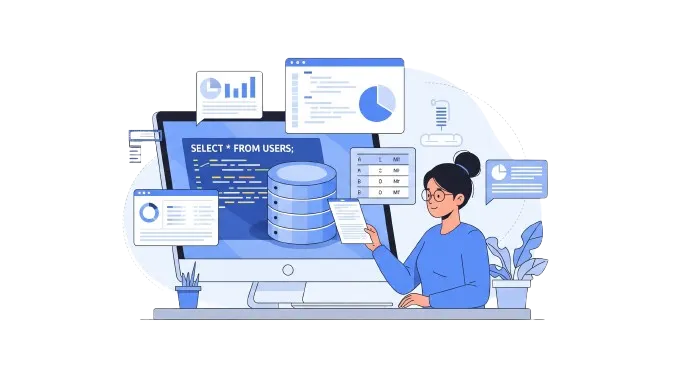SQL-tutorial
Whether you are exploring databases for the first time or sharpening your skills for career growth, this SQL tutorial is built just for you.
We simplify learning by breaking down complex topics into easy-to-understand lessons. This tutorial is structured for both beginners and experienced developers. You will go from the basics of SQL to advanced querying techniques used by top IT companies.
Why Learn SQL ?
SQL (Structured Query Language) is the standard language used to interact with relational databases. It allows you to perform crucial operations like retrieving, inserting, updating, and deleting data.

Key Benefits of Learning SQL:
- Work with Data: Efficiently access, manage, and manipulate data.
- Universal Use: Compatible with all major databases like MySQL, PostgreSQL, Oracle, and SQL Server.
- Career Advantage: In-demand skill for roles in Data Science, Data Analytics, Backend Development, and Business Intelligence.
What This Tutorial Covers
This SQL tutorial combines conceptual clarity, hands-on exercises, practice MCQs, and interview preparation. By the end, you’ll be ready to apply SQL confidently in real-world applications.
What to Expect in Every Chapter
1. Key Points for Each Topic
Each chapter starts with the most important takeaways and real-world use cases.
2. Syntax & Examples
Every SQL command is explained with clear syntax and followed by working examples using real-life data formats.
3. Hands-on Exercises & Practice MCQs
Reinforce your learning with exercises at the end of each chapter. You can also test your understanding through quizzes in the Practice MCQs Section after completing multiple chapters.
4. Interview Question
Get job-ready with frequently asked interview questions provided in each chapter’s Interview Section.
Who Should Take This Tutorial?
- Beginners who want to understand how databases work.
- Students preparing for exams, internships, and placements.
- Data Enthusiasts entering analytics or data science fields.